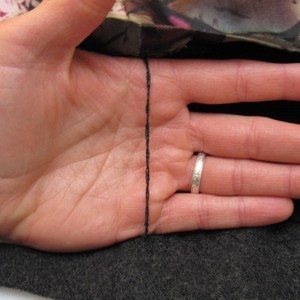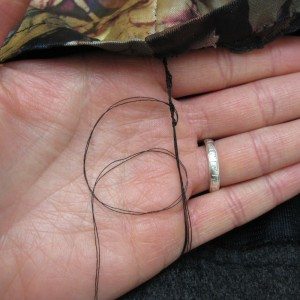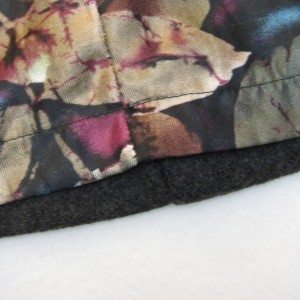What’s the little fiber bridge
that keeps your linings tame?
S-W I-N-G T-A-C-K-S
Okay, that was uncalled for. But swing tacks, also known as French tacks and thread bars, are pretty great. They are a connection between two pieces of fabric that keeps the fabric in general alignment while allowing some motion. You’ll almost always find them at the hem of lined pants, for example, so the lining can’t twist or bunch up. I used them recently for my wool peacoat (which you may recognize from its relining).
The center back hem of the lining needed a tack. I’d tacked it twice already, but it kept coming out because I was doing the shortcut: a finger-knit chain (which should be called finger-crocheted, since it is exactly a tightened crochet chain). The problem with that is it only stitches through each end once, unlike a thread bar. The pockets also needed tacks so they would stop coming out every time I pulled out my mittens.
How do you make a swing tack? Stitch back and forth between your two layers a couple of times – I usually have 3 or 4 crossings (here, three, with doubled thread) between them. That allows you a strong connection that’s not just through a single bit of fabric. Then make a buttonhole stitch down the threads to hold them together and give them a layer of protection against wear. Buttonhole on thread is actually a series of half hitch knots, and it goes surprisingly fast. In the image above, the half hitch is made but not tightened. It may be hard to tell what’s on top: where the thread crosses itself, the part closer to the needle is on top. Where the thread crosses the tack, the tack is on top at the upper crossing and the thread is on top at the lower crossing.
When you tighten the stitches they will be much closer together than is necessary to sufficiently cover the thread bar, so don’t despair if your stitching seems to be making no progress! Just spread them down the bar with your thumb and forefinger.
Pardon the blur. The added benefit of a properly-made swing tack is the buttonhole stitch wants to spiral around the threads, causing the whole works to coil up when it’s not being pulled on, and hiding completely under the fabrics.
Besides swing tacks, thread bars are used for invisible belt loops and for lingerie straps (where one end of the bar is inside a garment shoulder and the other attaches to a snap, with the other half of the snap also on the garment shoulder – you can use lightweight ribbon for this as well). They are a good tool to know, and one I’ve been meaning to write about for over a year!


